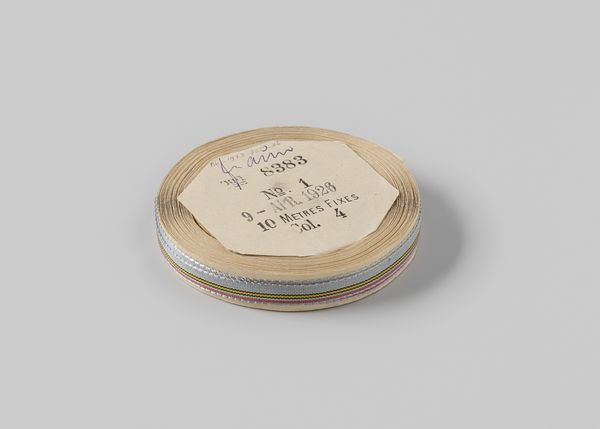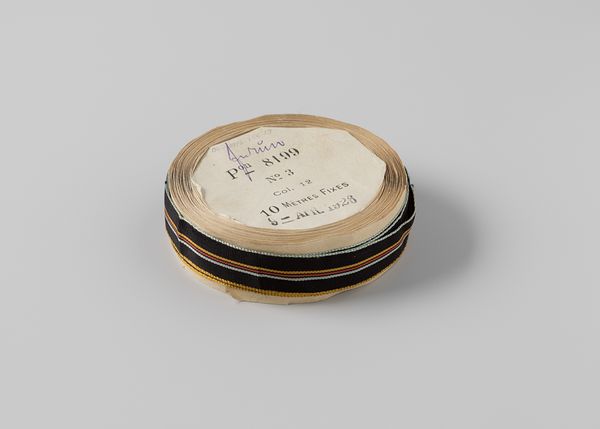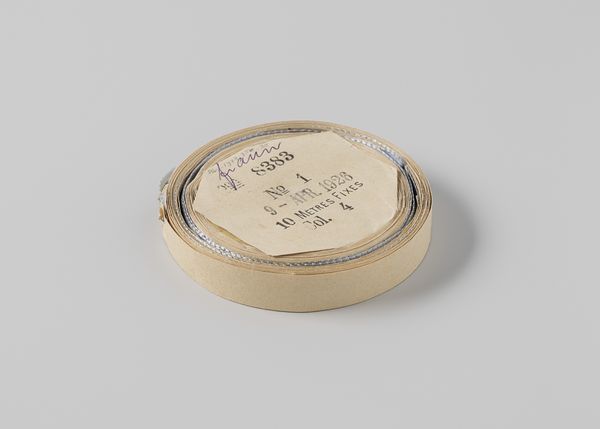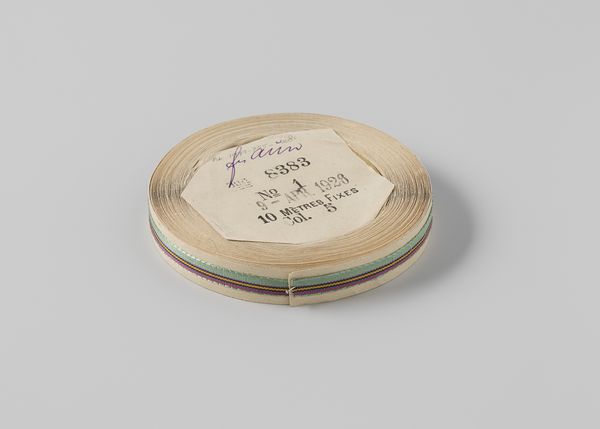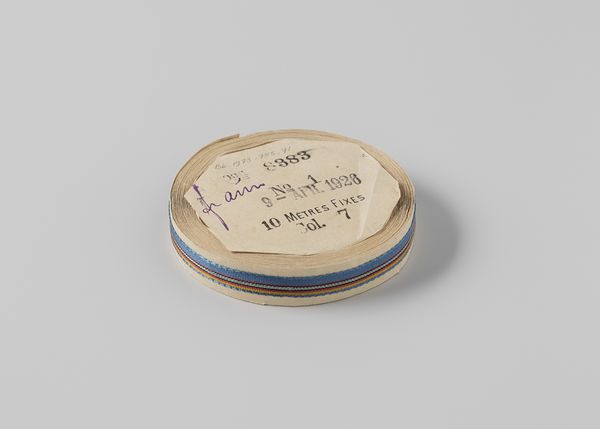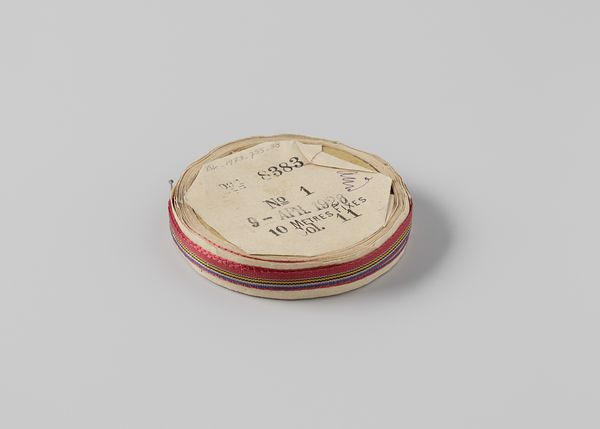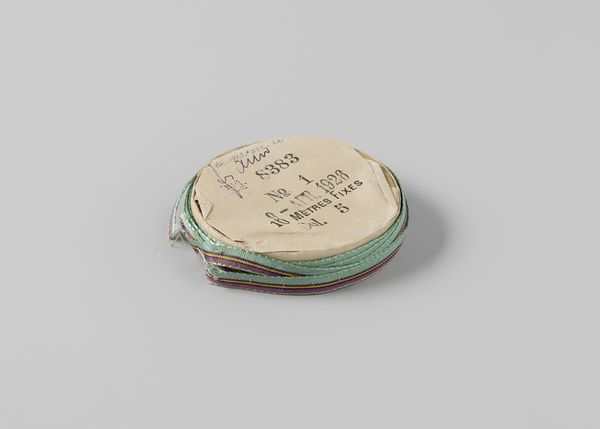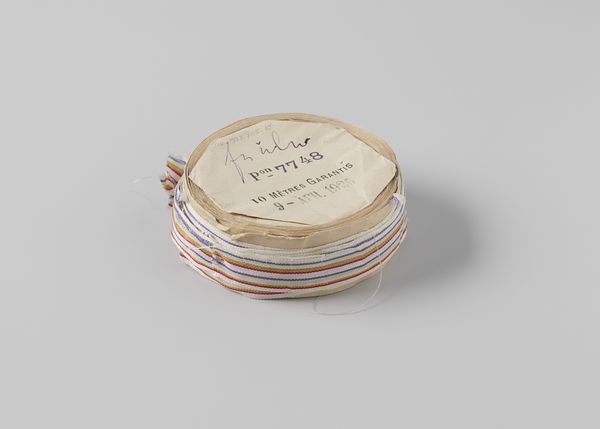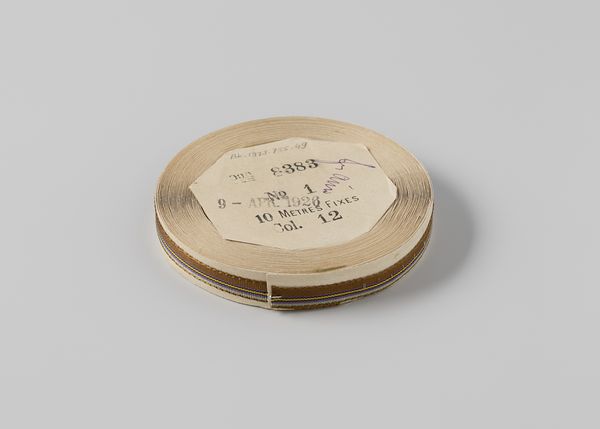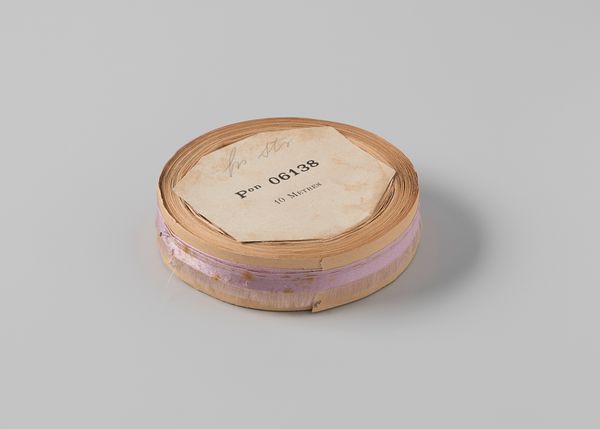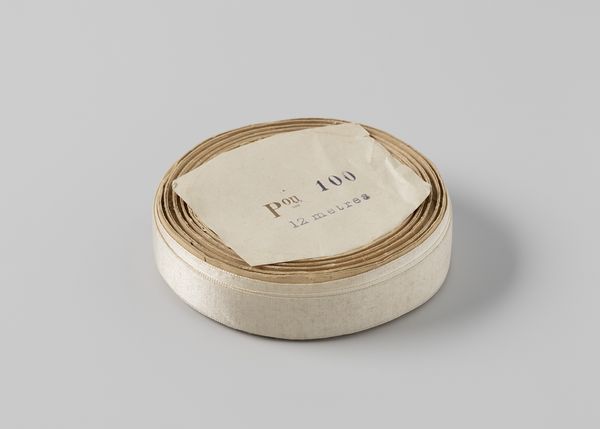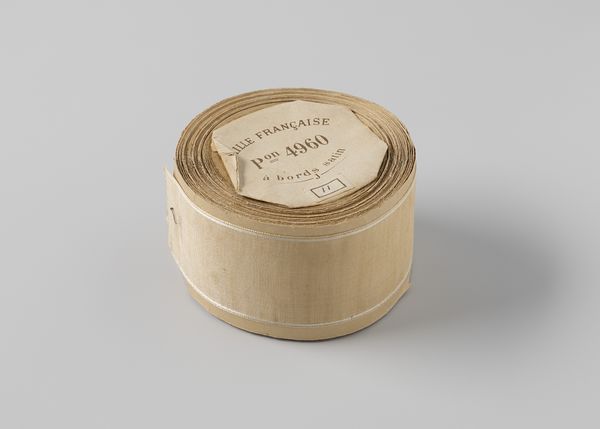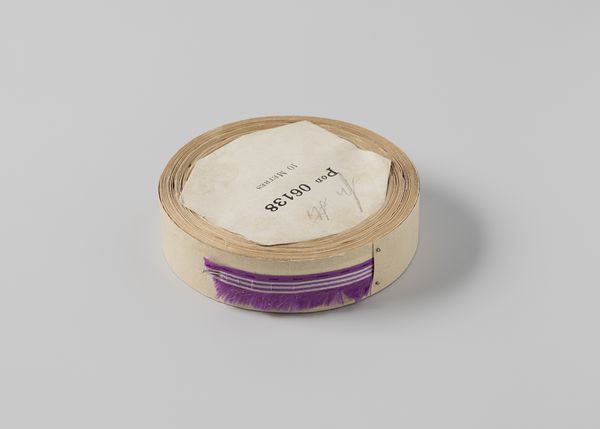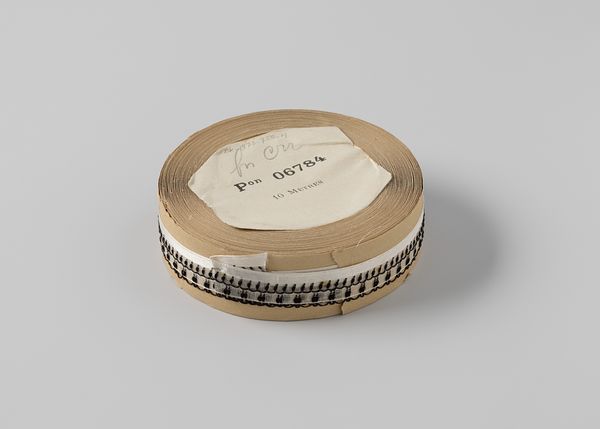
Lint op rol, gestreept, bruin met lila, zwart, lichtgroen en oranje before 1926
0:00
0:00
Dimensions: width 0.7 cm, diameter 9 cm
Copyright: Rijks Museum: Open Domain
Curator: Before us, we have a photograph taken by Gustav Schnitzler prior to 1926. The Rijksmuseum calls it “Ribbon on a Roll, Striped, Brown with Lilac, Black, Light Green, and Orange." What catches your eye? Editor: It's unexpectedly melancholic for a picture of ribbon. Perhaps it's the subdued palette, those muted browns and soft lilacs, evoking a sense of nostalgia, like a forgotten craft project in an attic. The roll format suggests mass production. Is this design frozen in time, like an artifact that is meant to suggest progress? Curator: Schnitzler’s eye isolates it, elevating it to something more than a mere commodity. See how the plain background throws the details into sharp focus. The handwritten label affixed, likely detailing measurements or inventory information, serves as a symbol for past commercial habits, which is at the same time intensely personal and ephemeral. Editor: I see that tension, this collision of mass production and individual handling. I wonder, what social strata were interested in consuming ribbons when the picture was taken? The delicate nature of this striped pattern strikes me as a possible artifact of the Belle Epoque when a premium was placed on subtle, though beautiful objects to be bought and collected in fashionable spaces. Curator: Absolutely. It reflects the evolution of taste and fashion, of shifting economic structures and production processes. Yet there is an inherent stillness and order, an intentional symmetry that invites a broader contemplation beyond consumer culture, like contemplating the eternal nature of simple things made with a high level of intention. Editor: It seems that you can contemplate order but for me, a relic like this must trigger memories of an uneven playing field, especially around issues of gender and labor. These domestic objects often had real consequences for the poor women who were employed making them. Curator: An important point. The very stripes become loaded signifiers, embodying both beauty and historical inequalities. And thinking of broader meanings, the circular shape of the ribbon echoes themes of cyclicality, the recurrence of fashion, and the persistent human desire for beauty, and commerce, despite its obvious potential hazards. Editor: It is, in the end, a potent object lesson, and it demands to be reconsidered in an atmosphere that is conscious of what and whom the object might have taken advantage. Thanks for a thought-provoking discussion. Curator: Likewise. Looking more closely does indeed help unpack so much, beyond an aesthetic impression.
Comments
No comments
Be the first to comment and join the conversation on the ultimate creative platform.
